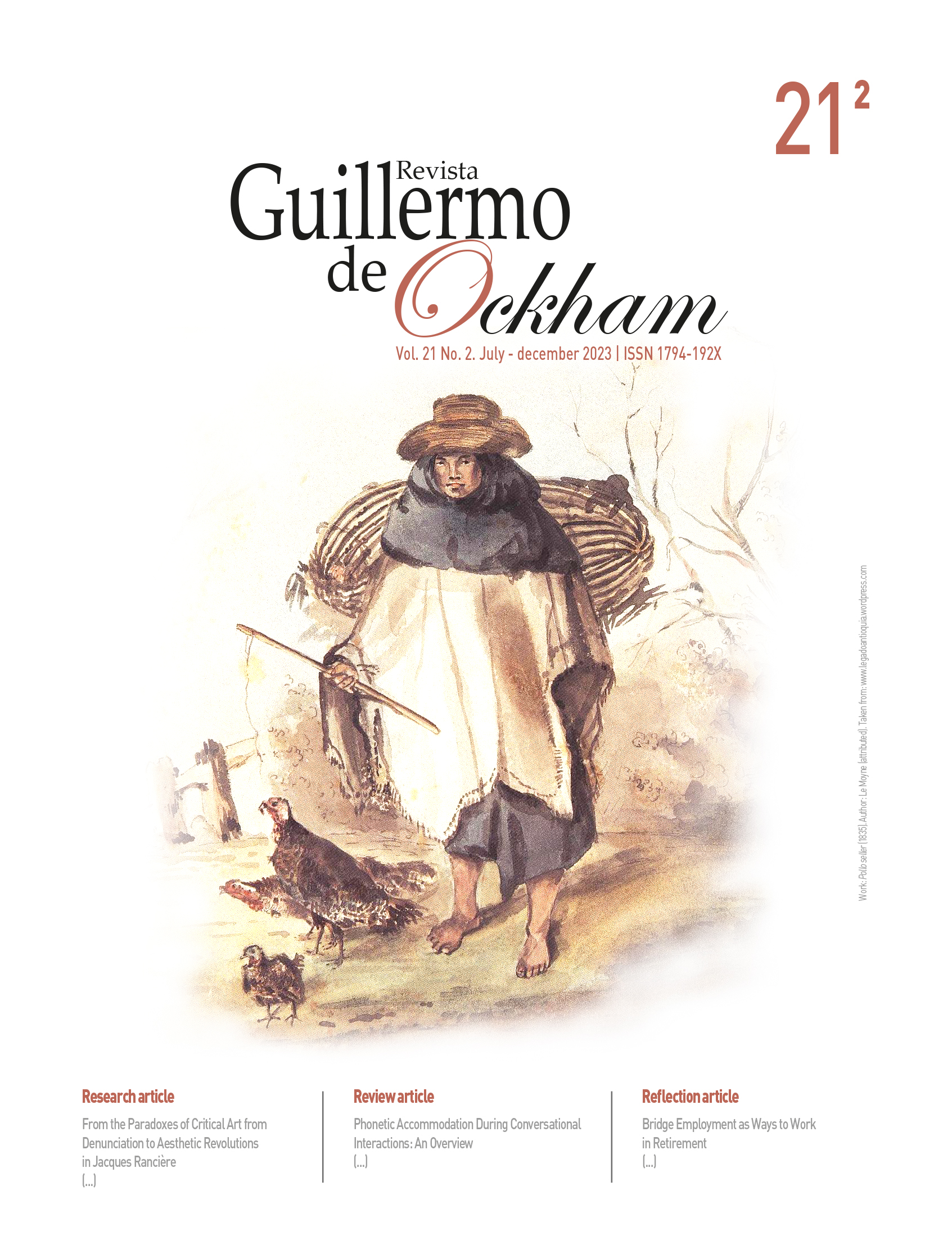The Revista Guillermo de Ockham provides an immediate and open access to its content, based on the principle of offering the public a free access to investigations to provide a global interchange of knowledge.
Unless otherwise established, the contents of this journal has a license with Creative Commons Attribution-NonCommercial-NoDerivatives 4.0 International (CC BY-NC-ND 4.0) http://creativecommons.org/licenses/by-nc-nd/4.0/
- Attribution: You must give appropriate credit, provide a link to the license, and indicate if changes were made. You may do so in any reasonable manner, but not in any way that suggests the licensor endorses you or your use.
- NonCommercial: You may not use the material for commercial purposes.
- NoDerivatives: If you remix, transform, or build upon the material, you may not distribute the modified material.
- No additional restrictions: You may not apply legal terms or technological measures that legally restrict others from doing anything the license permits.
Abstract
The structuralist years of the years 1960 were marked in France by the will of an intransitive writing, turning the back to the society in the name of a white writing, intransitive said Roland Barthes, cut of the real, of the referent. However, one attends today a "return" of the fiction, the novel towards the social world. One could think that it is about a return to the XIXth century, to the realism of a Balzac, of a Zola, but in fact this new approach of the social is nourished by the contributions of linguistics, sociology, psychoanalysis, history. The present time is marked by the opacification of the future, of the project and falls back on presentism. This presentism has for consequence to modify fundamentally our relation to the past which does not correspond any more to one of the elements which carries towards the future, but becomes melancholic, nostalgic, patrimonial, for lack of project towards a future.
Keywords:
References
De Certeau, M. (1975). L’écriture de l’histoire. Gallimard.
De Certeau, M. (1994). La Prise de parole. Points-Seuil.
Dosse, F. (2011). Pierre Nora. Homo historicus. Perrin.
Dosse, F. (2013). Le présent est davantage que l’instant. Écrire l’histoire, (12), 37-46. https://doi.org/10.4000/elh.333
Dosse, F. (2023). Les vérités du roman. Histoire du temps présent. Cerf.
Ernaux, A. (2011). Ecrire la vie. Gallimard.
Ginzburg, C. (1992). Just one witness. Dans S. Friedländer (dir.), Probing the limits of representation. Nazism and the « final solution » (pp. 82-96). Cambridge.
Ginzburg, C. (2006). Le fil et les traces, vrai faux fictif. Verdier.
Hartog, F. (2003). Régimes d’historicité. Seuil.
Jablonka, I. (2014). L’histoire est une littérature contemporaine. Seuil.
Le Goff, J. (2014). Faut-il vraiment découper l’histoire en tranches ? Seuil.
Quignard, P. (1991). Tous les matins du monde. Gallimard.
Rousso, H. (2012). La dernière catastrophe. L’histoire, le présent, le contemporain. Gallimard.
Viart, D. (2012a). Fins de la littérature : historicité de la littérature contemporaine. Armand Colin / Recherches
Viart, D. (2012b). Les massacres de Cassandre et le présent de la littérature. Arguments et enjeux des discours de la fin. Dans D. Viart & L. Demanze (dirs.), Fins de la littérature : esthétiques et discours de la fin (t. 1, pp. 9-34).
Vidal-Naquet, P. (1987a). Les assassins de la mémoire. La Découverte.
Vidal-Naquet, P. (1987b). Un Eichmann de papier. Dans P. Vidal-Naquet, Les assassins de la mémoire (pp. 11-85). La Découverte.
Wieviorka, A. (2002). L’ère du témoin. Pluriel.
































